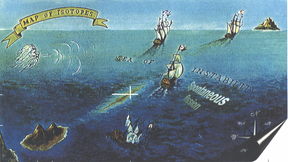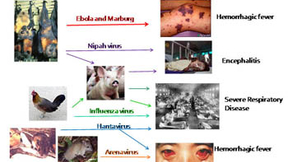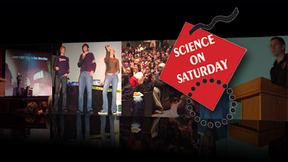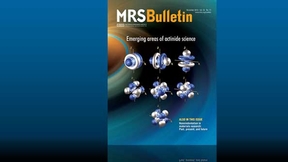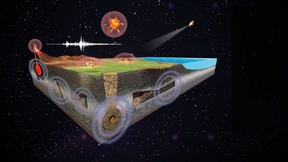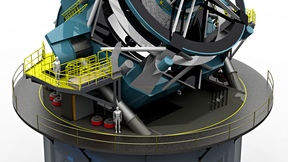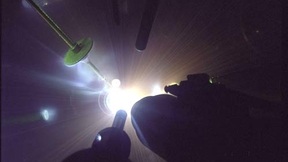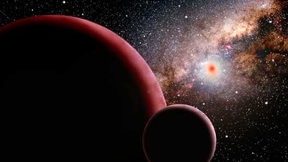Back
LIVERMORE, Calif. -- Scientists have found that calcium, aluminum-rich inclusions (CAIs), some of the oldest objects in the solar system, formed far away from our sun and then later fell back into the mid-plane of the solar system. The findings may lead to a greater understanding of how our solar system and possibly other solar systems formed and evolved. CAIs, roughly…
WHO: Lab scientist Ken Moody and teacher Dean Reese will present "Superheavy Elements: Search for the End of the Periodic Table."WHAT: The periodic table provides a way of presenting chemical information that makes it the fundamental tool of the chemist. Consequently, it is displayed on the walls in most science classrooms. Recent discoveries of new elements have extended…
Researchers and technology transfer professionals from Lawrence Livermore National Laboratory will receive two awards for excellence in technology transfer by the Federal Laboratory Consortium. LLNL's two awards this year make it one of seven research laboratories to receive multiple honors, among the more than 250 federal government laboratories and research centers that…
WASHINGTON, D.C. - Lawrence Livermore National Laboratory will showcase its work in energy research when the American Association for the Advancement of Science holds its annual gathering, Feb. 17-21, at the Walter E. Washington Convention Center. This year's theme, "Science Without Borders," integrates interdisciplinary science -- both across research and teaching -- that…
A team of Lab researchers may be able to use rare mutations from the virus population of an animal host to distinguish between samples that previously appeared to be genetically identical. Their work, done in collaboration with a researcher from the Richmond-based California Department of Public Health, won one of three outstanding poster awards at a Defense Threat…
Researchers at Lawrence Livermore National Laboratory (LLNL) have discovered a new way to combat antibiotic resistant bacteria by using the bacteria's own genes. For more than 50 years, antibiotics have been used to treat a variety of deadly infections and saved countless lives. Its broad introduction and application has changed the face of medicine worldwide. Yet, despite…
Lawrence Livermore National Laboratory's popular lecture series, "Science on Saturday," returns Feb. 5 and runs through March 5. This year's talks cover a wide range of current topics -- using proton therapy for cancer; harnessing the wind for energy needs; withstanding climate change; and the search for the end of the periodic table. The lectures are free of charge and…
LIVERMORE, Calif. - Kennedy Reed, a physicist at Lawrence Livermore National Laboratory, has been awarded the distinction of American Association for the Advancement of Science (AAAS) fellow. He is being recognized for important studies in atomic theory, and for many successful efforts to increase minority participation in the physical sciences in the United States and…
L IVERMORE, Calif. -- Four Lawrence Livermore National Laboratory scientists have been selected as 2010 fellows of the American Physical Society (APS). Less than half of a percent of the APS members are fellows. It is a distinct honor because the evaluation process, conducted by the fellowship committees of individual divisions, topical groups and forums, relies on…
Livermore researcher Kevin Moore, an invited guest editor for the Materials Research Society Bulletin , recently helped put together the November 2010 issue titled, "Emerging Areas of Actinide Science." In the issue, actinide materials, which are the backbone of nuclear energy, are examined in respect to the pressing need for carbon-free energy production. Moore said…
Researchers in carbon nanotubes, originally developed at the Laboratory, have been awarded more than $100,000 by the California Energy Commission to apply the technology to curbing industrial pollution. Hayward-based Porifera, Inc., headed by former Lab scientist Olgica Bakajin, was awarded $115,397 for a project to research and develop carbon nanotube membranes to…
In a first for the region, a Lab seismologist recently took part in a workshop in Amman, Jordan to work more closely with seismology centers throughout the Middle East. The workshop was hosted by the National Nuclear Security Administration (NNSA) and the Provisional Technical Secretariat (PTS) of the Preparatory Commission for the Comprehensive Nuclear-Test-Ban Treaty…
LIVERMORE, Calif. — The Large Synoptic Survey Telescope (LSST), in which Lawrence Livermore plays a large role, has been ranked by a key scientific committee as the top priority for the next large ground-based astronomical facility.In a recent report, New Worlds, New Horizons in Astronomy and Astrophysics , a committee convened by the National Research Council for the…
Most people know that diamond is one of the hardest solids on Earth, so strong that it can easily cut through glass and steel.Surprisingly, very little is known about the strength of diamond at extreme conditions. But new research by Laboratory scientists shows that diamond becomes even stronger during rapid compression.Using the Janus laser at LLNL and the OMEGA laser at…
By using a high-power laser to dynamically compress materials to high pressures, scientists have developed a new technique to identify phase transitions that may one day reveal the interior structure of "super Earth" planets. Phase transition kinetics are the time-dependent changes that materials undergo when transforming from one structure to another, whether it's a gas,…


